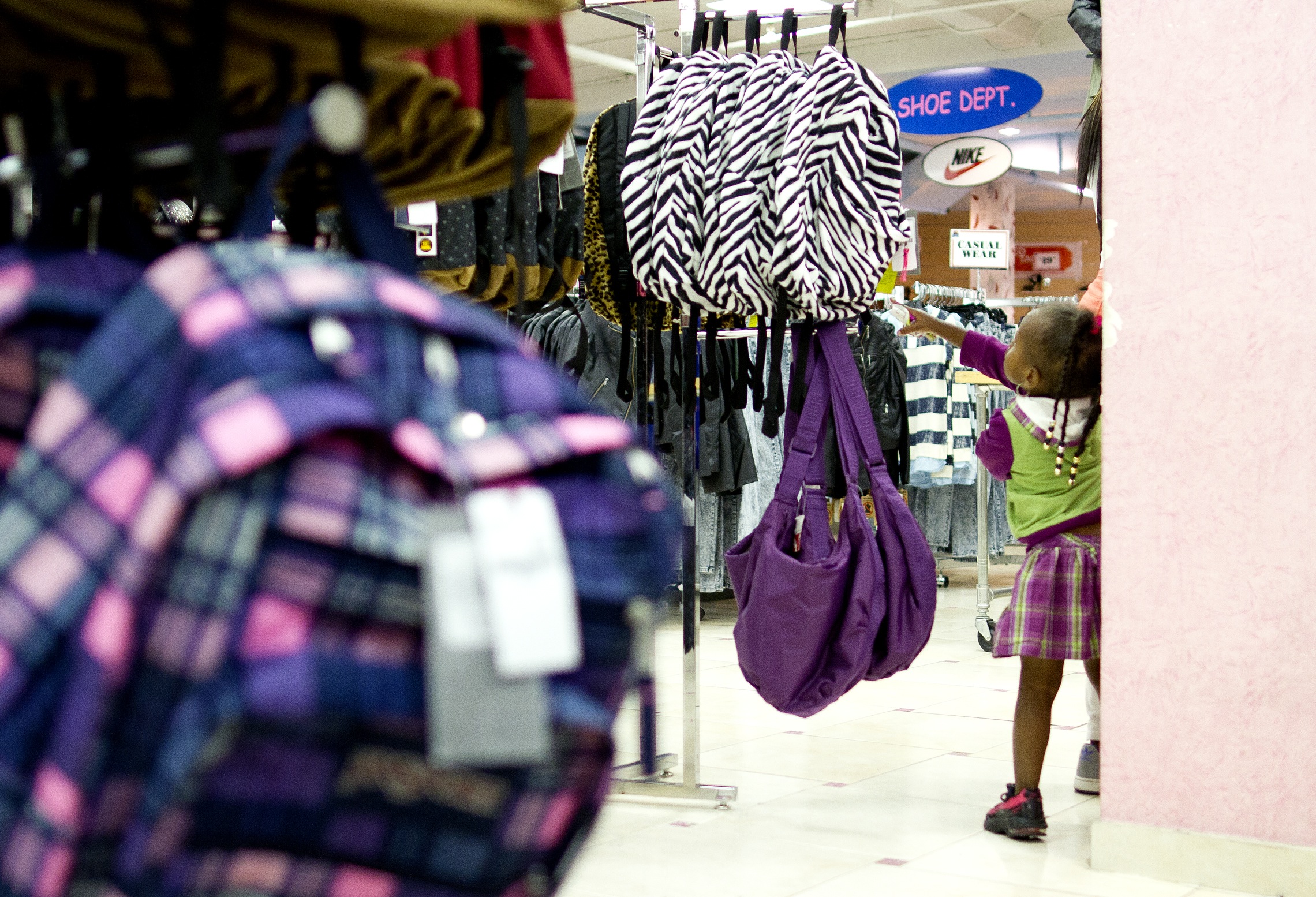On the last Sunday afternoon in September, it was still too warm to wear your autumn sweater, but some of the droves of shoppers on Fulton Street brazenly buttoned up nonetheless, as if they were urging the season to change by force of will and wardrobe. They strolled up the sidewalk in high-top sneakers, swinging their bags from side to side, making conversation with the placard men, dismissing catcalls, and stopping before storefronts — each one with an elaborate display of mannequins and signs for the moment’s fashion: back-to-school-wear. A mother dragged her son, clinging nervously to an inflatable airplane that he hugged in his left arm, into Brooklyn U.S.A. on the corner of Duffield Street, to look for a new pair of sneakers. At Jimmy Jazz, two boys, about eleven years-old, wandered off in search of sweatpants; they climbed the steps to the second floor and got lost in the white-and-green maze. Stopping before a rack of sportswear, they bowed their heads and flipped through the pants for a minute until one of them realized, “Hey, these are for girls!” They laughed mischievously and scurried away, never to be seen in the women’s department again.
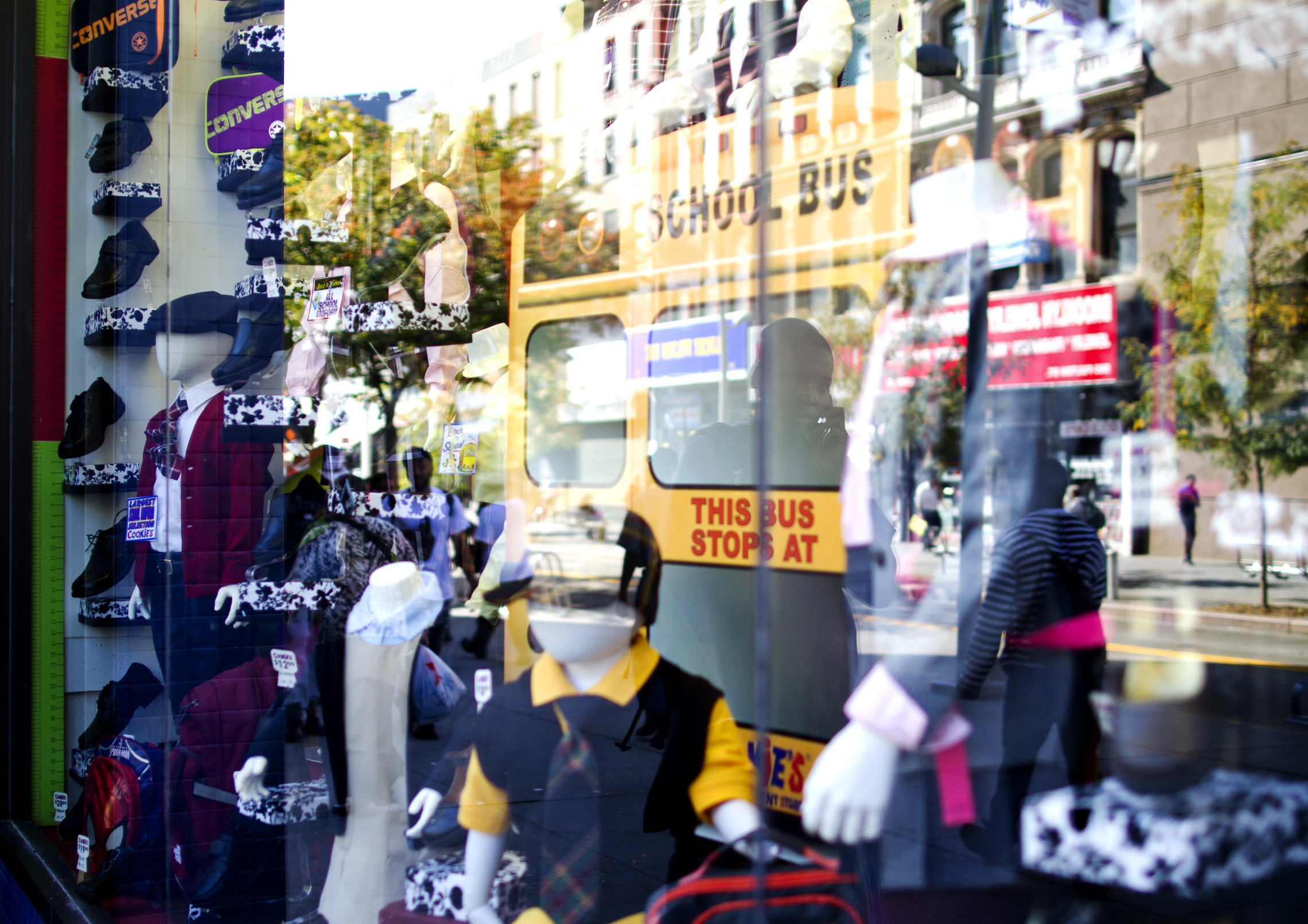
The Fulton Mall has about 150 stores. It’s the busiest shopping district in Brooklyn, with a hundred thousand patrons a day; by noon, families flooded the sidewalk with bags from Gap, Aéropostale, and the other big chains, most of them very recent additions to the seventeen-block strip. At the original building of the Abraham & Straus department store, there were signs of upheaval. (In 1885, the Brooklyn Daily Eagle described it as a place where “women of delicate nerves will find solid comfort in its quiet and orderly limits.”) That afternoon, a brother and sister chased one another through the building — now a Macy’s — with hangers, cocked into gun-position. The shootout was short-lived, however, as they were scolded almost immediately by their father, who didn’t seem particularly keen on shopping to begin with. Elsewhere, a woman vented into the phone about how much the neighborhood has changed in the past few years. “None of these stores used to be here,” she sighed. She shook her head a little, and then resumed sifting through the blouses at Express.
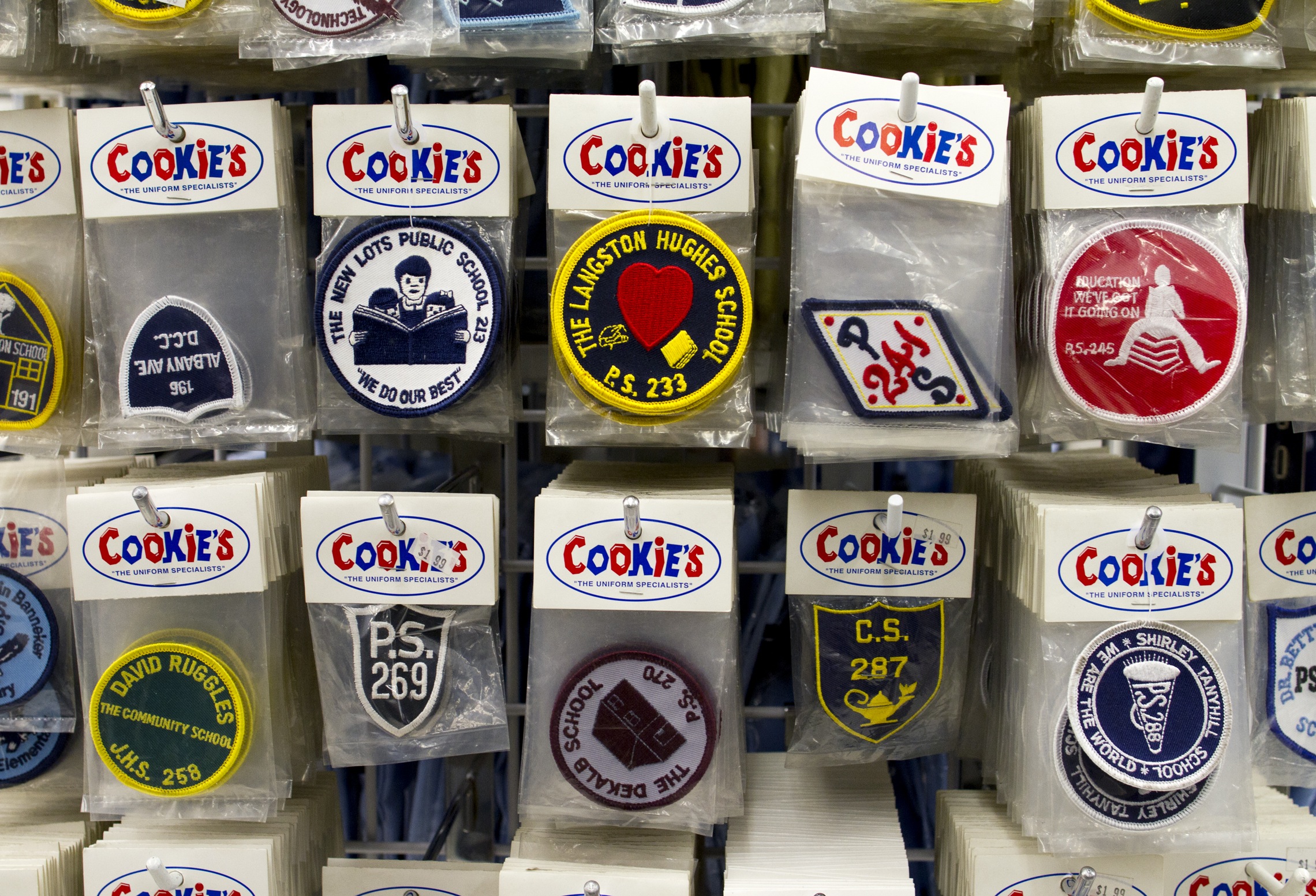
As the shopping corridor advances in age, each year leaves behind some residue on the street — a painted billboard not yet chipped away, preserved Art Deco architecture in an entranceway — but every fall it returns to a familiar sense of purpose. New clothes put on a varnish, for the neighborhood of the stores that carry them, and for the children who wiggle into them before the first school bell.
The mecca of children’s clothing on the Fulton Mall is Cookie’s — “We ARE school uniforms,” claims the flag perched outside — and its window features a tableau of jumpers, vests, and knee socks, surrounding a colossal cutout yellow school bus with the inscription: “THIS BUS STOPS AT COOKIE’S.” The first Cookie’s opened in Jamaica, Queens, in 1975; there are now half a dozen locations, including three in Brooklyn. A woman glided through the colorful bazaar of racks, browsing sweaters, sneakers, tights, backpacks, books, games, nail art, winter coats, cribs, and a Brooklyn Nets T-shirt that costs $4.99 for size 2T. A teenager waited in line to purchase her first bra — pastel pink, with a little bow. A toddler snatched a pair of pink lace-up boots and presented them to her shopping companion, wondering aloud, “Grandma, don’t you think you should buy me these shoes?”
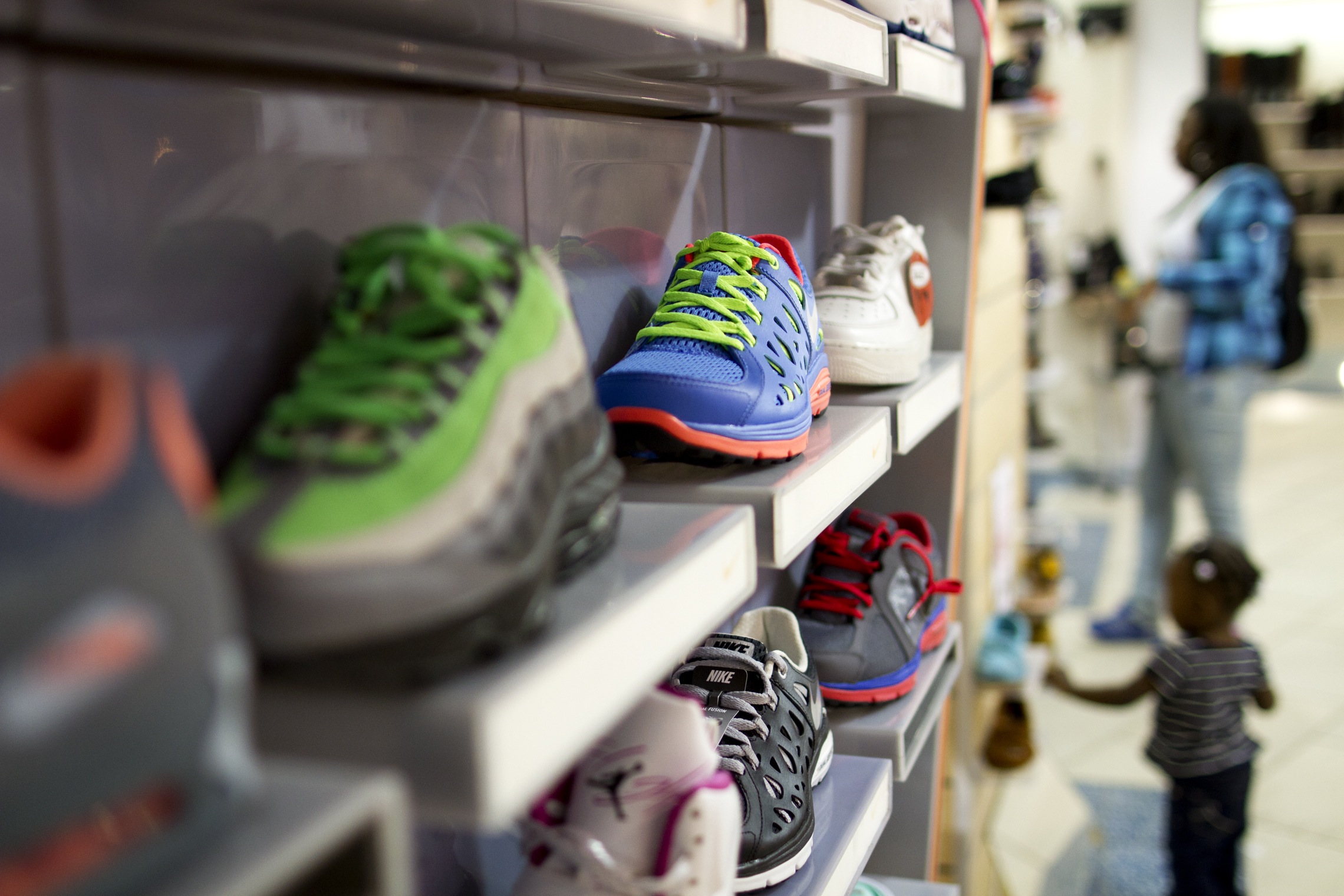
A few feet away, a girl with toothpick legs was eyeing the great wall of backpacks, in the exact manner of an art collector inspecting a coveted work. The backpacks were hung in half-a-dozen rows, reaching high above her head — seven feet, at least. There were purple ones and blue ones, red, black, and a few with patterns. Elsewhere, there were character-themed designs, bags-on-wheels, and mini-backpack purses. The girl, wearing glasses and straight black hair that was only slightly tangled, was planted in her contemplative pose. Her left foot in front, she leaned back to get the lay of the land, her chin raised, her right index finger resting against her cheek. Her father stood by, awaiting her judgment. Such a grave decision as selecting a backpack takes time — forty minutes, at minimum, by my count — because it is not only the facilitator of all homework assignments, but also the school year’s essential accessory, the accent piece of each day’s outfit, one’s declaration of personal style for an entire year. Any middle schooler knows that one cannot rush these things.
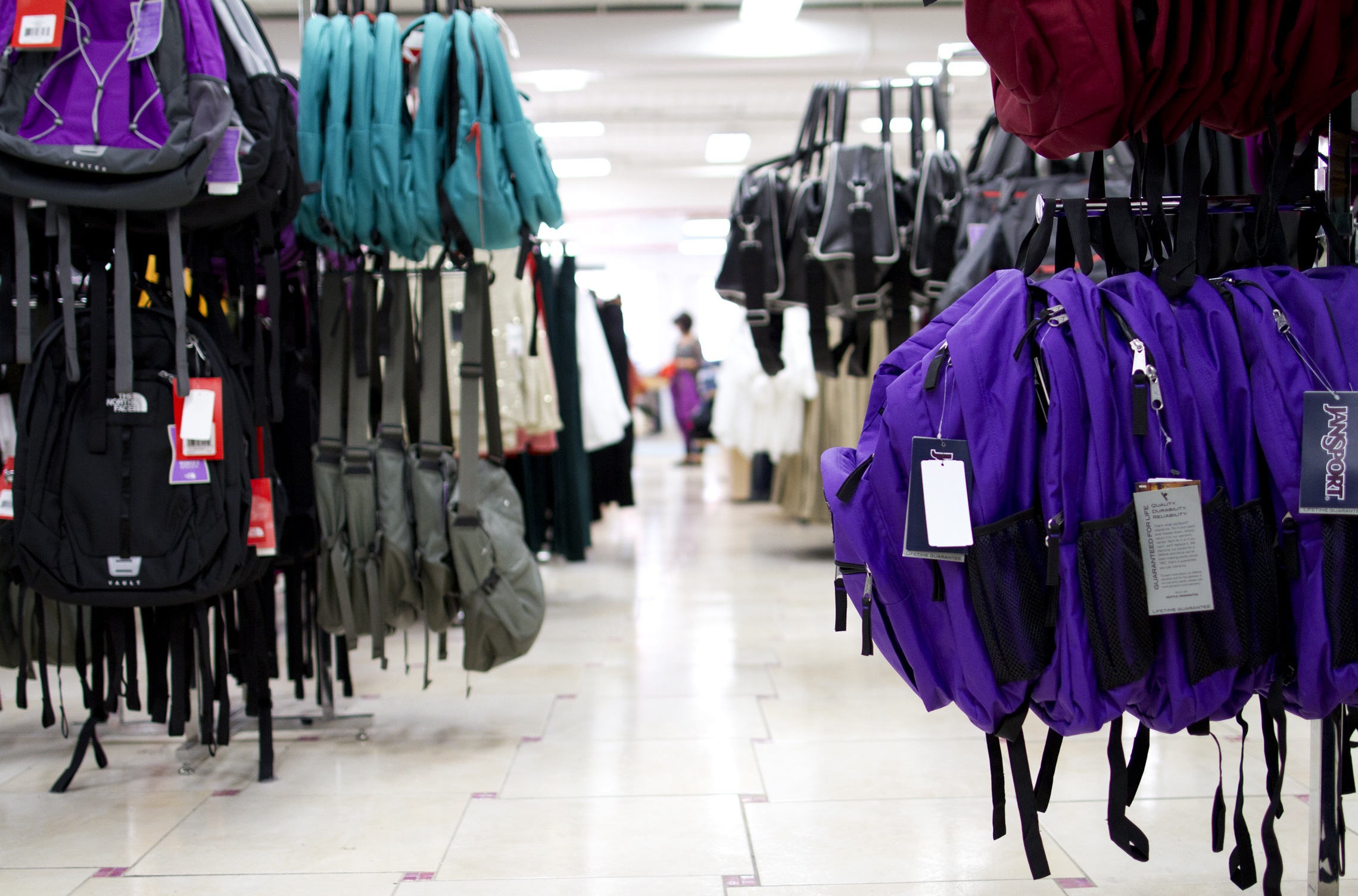
Dad stepped forward and touched a red one. “No,” she shook her head. He tried again, tapping a dark purple one. His daughter tilted her head and gave it some thought. A Hasidic man passed behind them, pushing a stroller and chatting on his cell phone. In the distance, a salesman could be overheard advising a young man to buy a larger-sized shirt: “You’re going to grow into it. This gives you room.” The customer’s little brother, meanwhile, constructed a fort out of folded jeans, digging through the stacks and tucking his head between them, for cover. By this time, a verdict on the purple backpack was in: it was not the one. On to the next, the girl gestured. Her father lowered his head, and obediently followed her upstairs, to review more options.
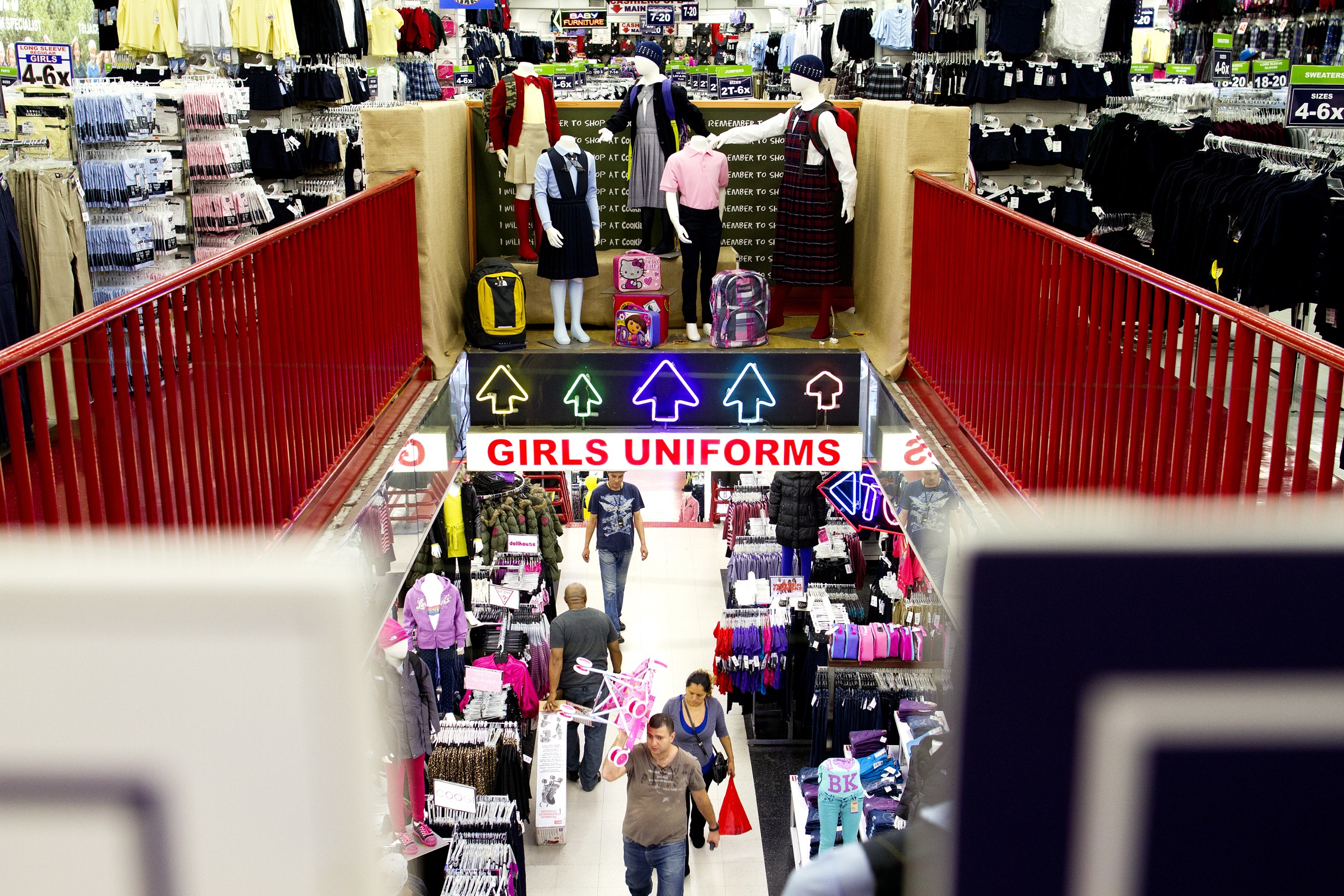
Up the steps, past the cradles and board games and socks, were the girls’ uniforms. Dozens of schools in Brooklyn require them: navy blue and gray skirts; black or khaki pants; white, black, or forest green collared polo or button-down shirts. Some pale yellow and light blue oxfords. They hung, lifeless, in the off-white den of homogeneity. While a mother examined the belts, her daughter, in a pink sweater and leopard print skinny jeans, hovered several steps away, distancing herself from the school clothes, and aimlessly dragging a rolling Hello Kitty backpack. With each step, her shoes made a high-pitched squeak. “Stop doing that,” her mother called out, not looking up from the rack. Her daughter turned her head, dismayed. But then she tried another diversion tactic: “Mom, look, they have pink over there!” Down the line of her pointed finger was the backpack hunter, wearing a look of satisfaction, at last, which could be matched only by her father’s relieved grin as he hugged a purple-plaid backpack to his chest, and marched to the checkout counter.
Out the door, a mild breeze blew a chill through the air — a whiff of transformation. A child could be heard from inside one of the smaller shops, admiring herself in the mirror, as she said, “Look at me!”
